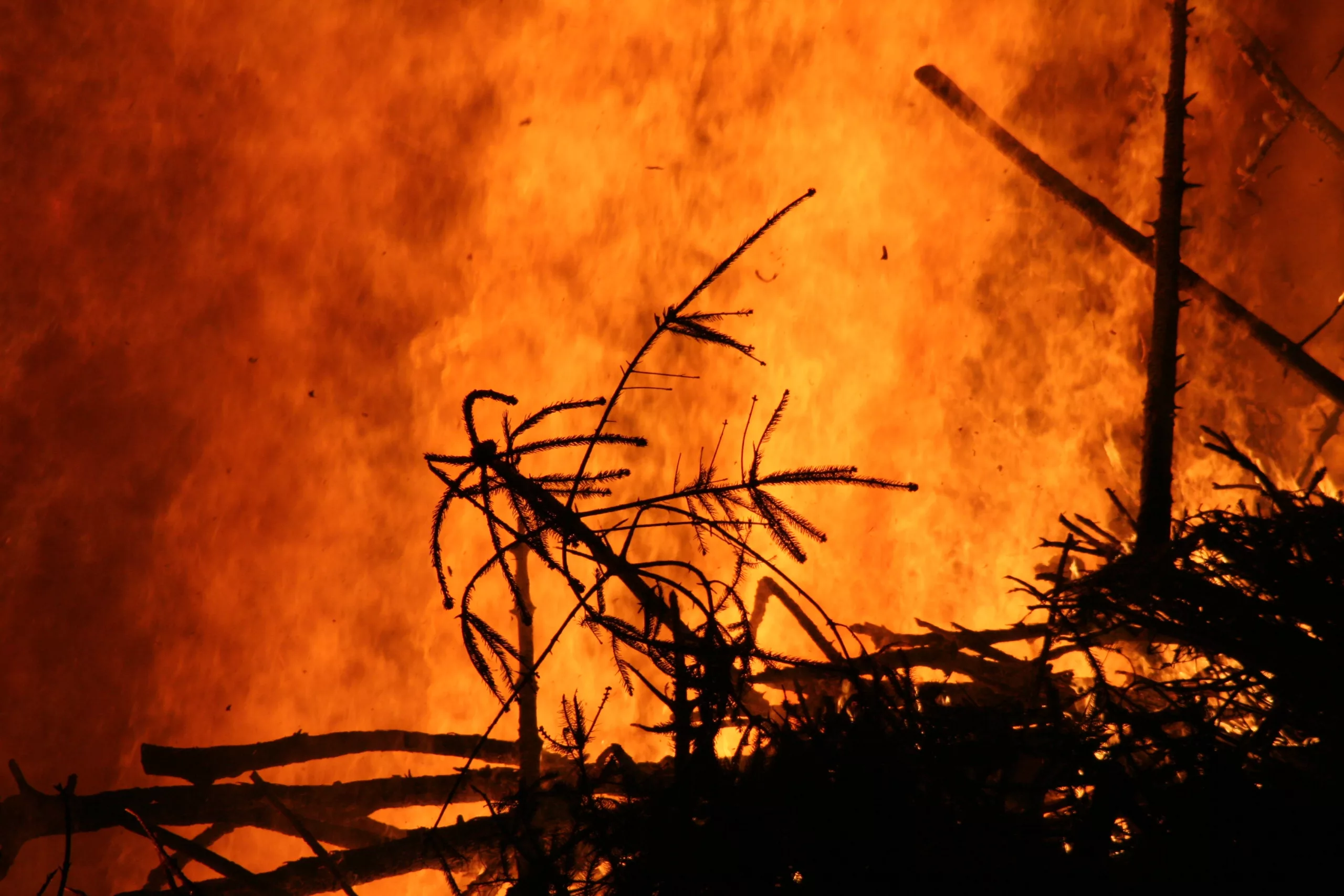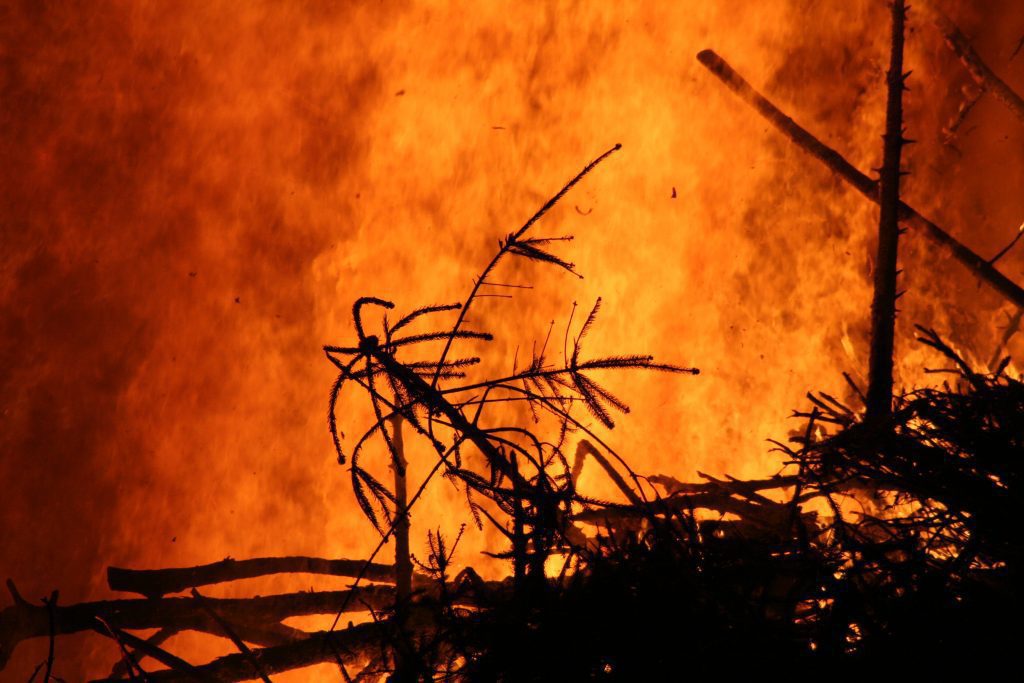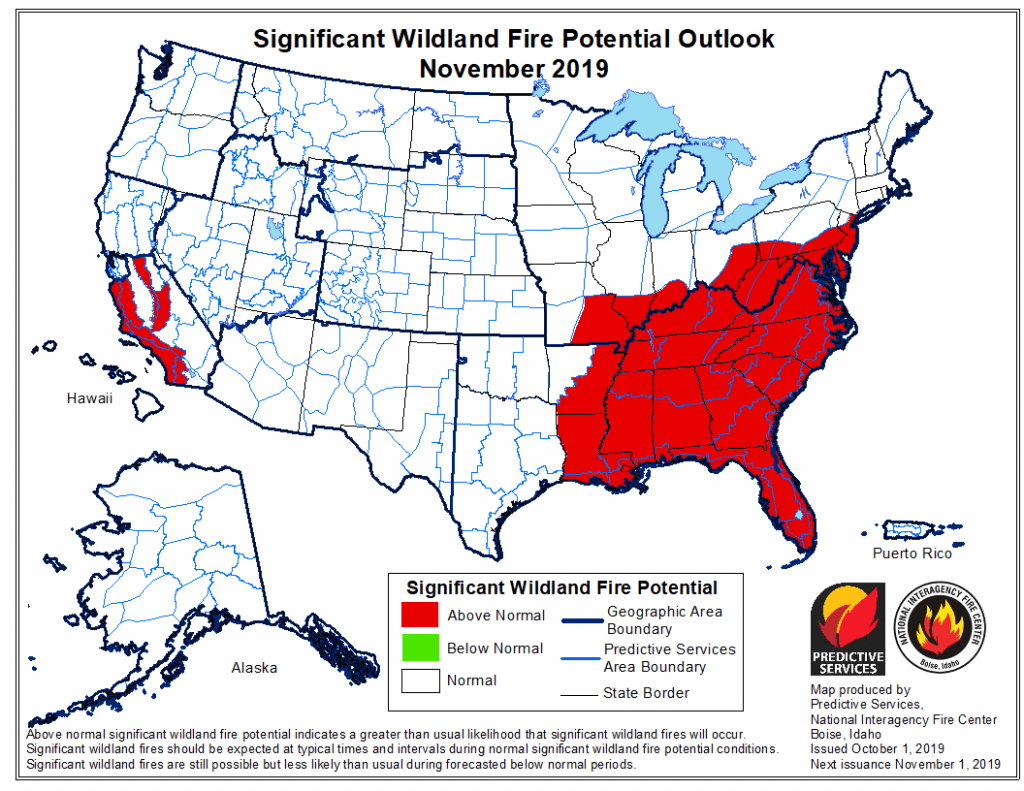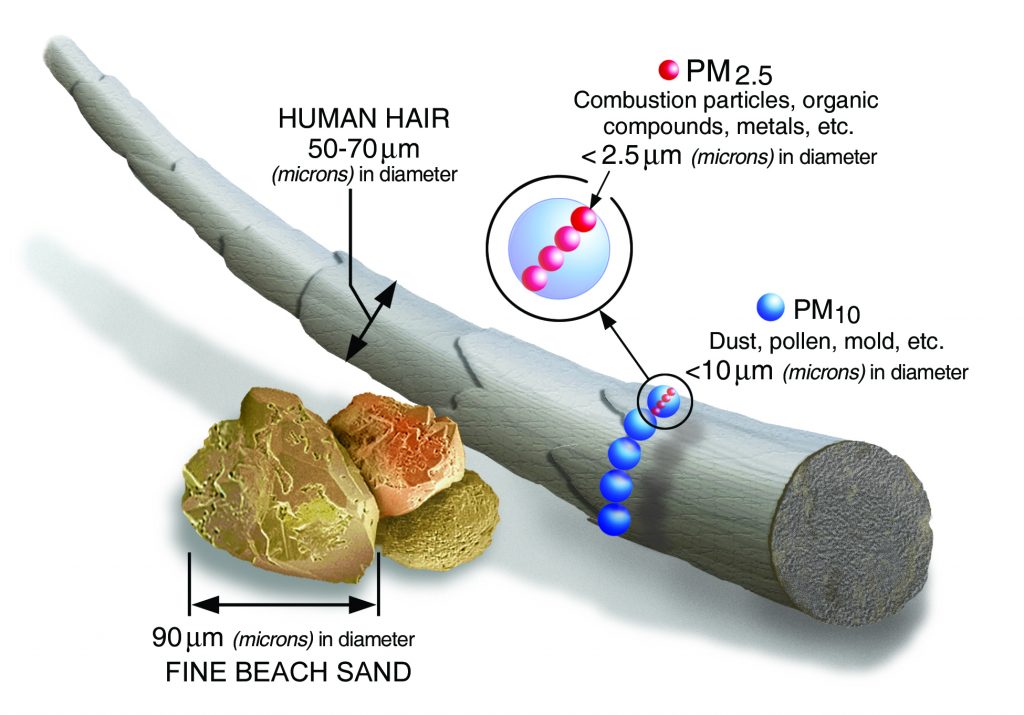
California’s Protection from Wildfire Smoke Regulation

Written by: Virginia McCormick, NES, Inc.

California’s Protection from Wildfire Smoke regulation aims to protect workers throughout the 2019 fire season.
Worker Protection from Wildfire Smoke Implemented
Following a devastating fire season that impacted much of the state in November of 2018, California adopted an emergency Protection from Wildfire Smoke regulation in July 2019. The regulation applies to workplaces with “unhealthy” concentrations of PM2.5 (particulate matter 2.5 micrometers in diameter or smaller) in the air and when employers anticipate that employees may be exposed to wildfire smoke.
As temperatures begin to drop, this year’s fire season is either over or is quickly coming to an end for most of the United States. But for Californians, the seasonal change often signals the coming of the Santa Ana winds – and the start of the second phase of the state’s fire season. The Santa Ana winds, sometimes called the “devil winds,” are infamous for contributing to California’s wildfires, due to the winds often being extremely dry and fast.
According to the National Interagency Coordination Center’s Predictive Services Program, California has several areas of elevated fire potential that will persist throughout the remainder of the year as a result of these winds. As Californians reflect upon the anniversary of the 2018 Camp Fire, many are growing concerned that this November will see similar wildfire conditions. By passing the Protection from Wildfire Smoke regulation, potentially affected workers may be more adequately protected if those concerns become a reality.
For more information on the November 2018 California wildfires, see the NES blog Hazardous Air Quality from Wildfires Sparks Demand for Respiratory Protection.

As shown in this National Interagency Coordination Center’s Predictive Services Program graphic, much of California will see above normal wildfire potential in November 2019.
Protection from Wildfire Smoke Essentials
In order to measure air quality, most government agencies use the air quality index (AQI), which ranges from 0 to 500. An AQI above 150 is considered unhealthy, according to the Environmental Protection Agency (EPA). When the AQI is 151 or greater, or where employers anticipate that employees could be exposed to wildfire smoke, the Protection from Wildfire Smoke regulation goes into effect.
In the Finding of Emergency informational digest that preceded the emergency ruling, it was noted that while the occupational safety and health standards within Title 8 of the California Code of Regulations required protection for workers from harmful respiratory hazards in general, there was no regulation that specifically addressed either harmful particulate matter (PM2.5) or wildfire smoke.
The digest states that, “a significant number of employers are uncertain about what protective measures to use or when to use them … Without specific regulatory guidance, these employers were confused about how to evaluate and respond to [wildfire smoke].”
The emergency regulation specifically applies to outdoor workers and workers in semi-indoor places, such as agricultural workers, landscapers, construction workers, and sanitation workers. Exempted from the regulation are indoor workplaces and enclosed vehicles with filtered air, firefighters engaged in wildland firefighting, and employees with short-term exposure to unhealthy air (one hour or less).
As detailed in the emergency regulations, employers are required to take the following steps to protect their workers:
- Identify exposure to airborne particulate matter from wildfire smoke at the start of each shift
- Periodically check the AQI for PM2.5 in regions where workers are located
- Reduce exposure to wildfire smoke by relocating work to an enclosed building with filtered air or an outdoor area with a safer AQI level
If employers cannot reduce workers’ exposure to wildfire smoke so that the AQI for PM2.5 is 150 or lower, they must provide:
- Respirators, such as N95 masks, to all employees
- Training on the new regulation, the health effects of wildfire smoke, and the safe use and maintenance of respirators
The Protection from Wildfire Smoke regulation is effective through to January 28, 2020. However, there are two possible 90-day extensions. It is uncertain at this point if the extensions will be enacted.

Employers must provide their workers with respirators, such as N95 masks, if exposure to wildfire smoke cannot be reduced to a safe level.
Particulate Matter 2.5: How Workers Could be Harmed
Particulate matter consists of a mixture of solids and liquid droplets found in the air. Particles come in a wide range of sizes and can derive from many different sources. Those less than 10 micrometers in diameter are small enough to enter deep into the lungs, where they can cause serious health problems.
The smallest particles (2.5 micrometers or less in diameter) are called fine particles. In the Protection from Wildfire Smoke regulation, fine particles are referred to as PM2.5. These particles are so small they can be detected only with an electron microscope. Major sources of fine particles include motor vehicles, power plants, some industrial processes, and wildfires.
Exposure to such particles can affect the lungs and hearts of exposed workers. According to the EPA, particle exposure has been linked to a variety of problems, including aggravated asthma, decreased lung function, heart attacks, irregular heartbeat, and premature death in people with heart or lung disease.
The regulation identifies PM2.5 as a source of damage to outdoor workers. Employers must measure PM2.5 levels at the worksite and convert the levels to the corresponding AQI in accordance with Appendix A of the regulation text.

PM2.5 can be inhaled deep into the lungs and cause a variety of health problems to exposed workers.
Beyond the Emergency Regulation
The EPA regulates inhalable particles, including those from wildfire smoke. EPA’s national and regional rules seek to reduce emissions of pollutants that form particulate matter by ensuring state and local governments meet national air quality standards. As noted in the Protection from Wildfire Smoke regulation, the 2018 wildfires were not an abnormality, and employers in general should be prepared for a, “high likelihood of widespread exposure to wildfire smoke in 2019 and beyond.”
Beyond the regulation, there are several ways employers can protect their workers when it comes to poor air quality caused by wildfire smoke:
- Keep work contained indoors, with doors and windows closed, as much as possible
- Minimize outdoor activities if smoke is present, even if workers feel healthy
- Research local programs that monitor air quality, such as gov, and schedule work accordingly
- Pay close attention to governmental guidance and public service announcements regarding ongoing smoke levels impacting your region
- Coordinate with workers who suffer from asthma or other health conditions that may be exacerbated by smoke inhalation
- Secure respiratory use and maintenance training for employees that may be exposed to wildfire smoke
See the Wildfire Smoke section on the Centers for Disease Control and Prevention (CDC) website for more information on how you can protect your workers around wildfire smoke.
Concerned About Hazardous Air Quality?
NES has been providing EH&S and industrial hygiene services on behalf of a wide array of public and private businesses and government agencies for the past 30 years. If you have questions regarding air quality monitoring, inhalation hazards, and/or remediation safety oversight for wildfire cleanup operations, please contact NES at 916-353-2360 / 800-637-2384 or via email at office@nesglobal.net.
References:
Emergency Regulation: Protection from Wildfire Smoke
KCET: The Devil Wind: A Brief History of the Santa Anas
Outlook Period – October, November, and December 2019 through January 2020
Wildfire Today: Portions of California expected to see above average wildfire activity
Air Quality Index (AQI) Basics
Finding of Emergency Informational Digest
EPA: Particulate Matter (PM) Basics
EPA: Health and Environmental Effects of Particulate Matter (PM)
